#miyata senior
Text


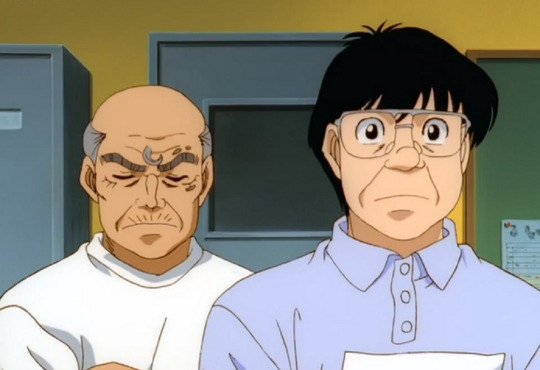



Hello fellow (probably nonexisting) Hajime no Ippo fans! Please tell me you want to see me draw all these men getting flustered/blushing. Any interaction with this post is taken as a yes.
#hajime no ippo#miyata senior#miyata's father#nekota#ginpachi nekota#kamogawa#genji kamogawa#yagi#haruhiko yagi#shinoda#bill stewart#sakaguchi
18 notes
·
View notes
Text
Love is Better the Second Time Around Ep 4 Stray Thoughts
Last week, Shiraishi didn't tell Iwanaga about a deadline to put Miyata in a rough position. Miyata went to see Iwanaga at a hot spring and get him to finish the article. As expected, there was no way for Miyata to leave afterwards and so they shared a hotel room. Miyata felt the tension of their situation and they had their first time. Later, when pushed by Iwanaga, Miyata refused to date him because he feels like he's letting his younger self down by losing to Iwanaga on the professional, romantic, and sexual fronts. Also, he told Shiraishi to stop being so insufferable.
Hold on, I'm interested in the senior's affair and how that's going to inform Miyata's choices.
That's right, Miyata! Don't let that mean twink get away with it twice!!
Oh shit Iwanaga's sick! It's time for the tropes!!
Fuck yes!! I was hoping Shiraishi would open the door!! I love how their interactions have become bitchier in each episode.
I like Miyata's attempt to hold the high ground.
Good news, gays! Iwanaga has at least a 75" TV.
Sweetie, you are not in good shape if you're jerking off to him in the shower.
I'm relieved that Miyata's project was a success.
Oh no. He's drunk and now he's calling him senpai.
He may be drunk, but he held his line. I'm impressed and relieved.
I'm going to be thinking about this exchange after their dinner for a long time.
"It pisses me off." Y'all can just go ahead and bury me.
Another goddamn ex!!
I know I'm going to end up watching this show multiple times in the future, because I'm going to need to marinate for a few hours in the way Miyata was eye-fucking that man all episode while telling him to stand back. I liked Miyata saying essentially that he wants Iwanaga to love him more than he loves him.
#Ben watches#love is better the second time around#koi wo suru nara nidome ga joto#japanese bl#bl series
92 notes
·
View notes
Text
Relationship: Family - Yoichi Shujo


Nobuo Shujo † — Yoichi’s father. He was a former baseball star player then retired to be a coach where he introduced baseball to Yoichi and started to take interest in it because of him. He’s a free-spirited and confident man as Yoichi remembers and they have a close bond as they spent time playing baseball together. His dad usually looks after him knowing his son is a scaredy wimp inside and out so he’s being emotional support to help him overcome his anxiety. He looks up to his dad as an inspiring idol at that time, wishing to be cool and brave as his dad but tragically, Nobuo died a hero when he got stabbed by a thief while defending innocent bystander when Yoichi was around 11 years old but he wouldn’t forget his time with him within a memory.

Kiyoko Shujo (41 years old) — Yoichi’s mother. She's a kind and level-headed widow who works as a nurse. She’s always worked full-time tirelessly to support her family’s financial situation. She tends to make bad jokes of pushing herself hard even if it means weakening her health which Yoichi felt worried about and decided to find a job himself to support her. She adores her children and always being there for them however, there are times she gets anxiously overprotective of Yoichi the most and wouldn’t want any of her children getting themselves in danger like her late husband’s death which brings her to have a bad habit of feeling responsible as a mother. Even if she’s worried, she’s mostly calm and collected among the family although she couldn’t help but terrified about Scourger’s return recently.

Jun Shujo (29 years old) — Yoichi’s older sister. She works as a senior photojournalist from Snowflake Sentinel News and the one who helps Yoichi by providing him a job to work in her workplace. Jun is described as a strong and assertive woman more than capable of handling herself and also with a quiet passion of picturing interesting events to seek the best scoop for the news but when she’s home, Jun is nothing but a caring older sister who loves her family and gets really worried about Yoichi’s weak mindset of things. On the other hand, he was grateful for her help, wanting to do his best to help and wouldn’t want to be a burden to her or his mom. Aside from her work, she was engrossed about “The Scourge” cases and quietly investigated herself for 5 years until now in hopes of revealing their identity. She has no idea about Yoichi’s alter ego nor his involvement with Scourger.

Ayane Shujo (22 years old) — Yoichi’s second older sister. She works as a waitress from a nightclub and also a social media influencer as her fun hobby. Ayane is a sociable and undeniably very attractive woman. A lot of her customers were swayed by her looks and flirtatious words, attracting more people to get along well with and gossiping. She’s the type of person who loves partying all night and spending good times with friends, getting the name of being the “sexy waitress”. However all of her charms are just to gain easy cash to support her family home finance and is pretty much down-to-earth of her reputation at work. At home, she’s only an ordinary but loving big sister who prioritizes her family first and is a very sweet person. Although Yoichi was overwhelmed by Ayane teasing him affectionately with playful remarks, especially with their siblings, it shows how much she loves them. About the Scourger, she heard about the urban legend and was confused between liking or disliking towards the vigilante because one time, her ex-boyfriend was being attacked by them a few years ago but shockingly found out her ex was actually an illegal smuggler behind her back, yet she was thankful for revealing her ex’s crime.

Miyata Shujo (13 years old) — Yoichi’s younger sister and a middle schooler. A lot of people from her school call her “voiceless doll” as Miyata has a cute face with her blank expression, describing her how silent she is who doesn’t like to talk a lot except wearing headphones while listening to music with no care in the world. The only things she wanted was minding her own business playing with her computer and not inclined to get involved with other people’s affairs. She may be distant but she does care a little bit about her family so she can bond with her family whenever she wants to and look out for them, as well. Yoichi and Miyata don't often talk to each other (as his little sister doesn’t want to) but he loves his sister no matter how distant she is, he wants to look after her and it’s fortunate both shared the same interests in video games so that’s how they can have brother-sister bonding with that. Miyata never saw or heard about Scourger…as such, she doesn’t care at all.
#hypmic#hypmic oc#hypnosis mic#hypnosis mic oc#oc division#sapporo division#polar knights#yoichi shujo#family members#relationships
9 notes
·
View notes
Text
All-Japan Championships AA results
🥇 Watanabe Hazuki 106.963 (53.598, 53.365) 🥈 Miyata Shoko 106.797 (53.198, 53.599) 🥉 Kishi Rina 106.764 (53.032, 53.732)
Kishi is a first-year senior. As a junior last year, she placed 12th at the NHK Trophy. #THE #DEPTH
Kishi had a solid Yurchenko double last year but it looks like she's improved across the board on her other events. Japanese WAG is becoming like MAG where they are just…
View On WordPress
0 notes
Photo
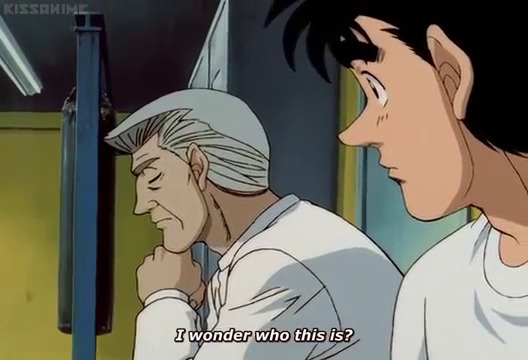





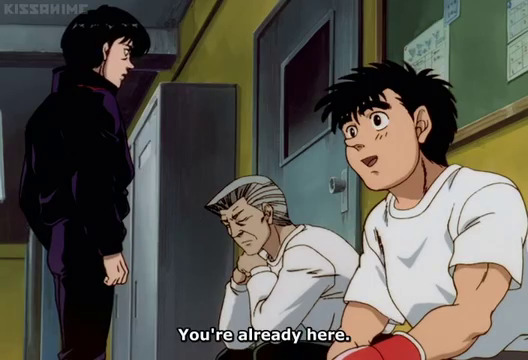



Okay, so that was just adorable the way Ippo thought that Miyata was coming over to him. That look on his face of both excitement and surprise! Sure, Miyata was only coming over to chat to his dad, but I guess that’s just one more thing that Ippo gets to learn about his forever friend/rival.
#hajime no ippo#anime#makunouchi ippo#miyata ichirou#miyata senior#miyata vs ippo#getting to know the family already#lol
12 notes
·
View notes
Text
Radix Core Performer Predictions 2021
Mini Female
Top 23
Diana Kouzentsova, Lucy Mae Dunn, Esprit Frank, Devyn Scherff, Tova Thompson, Isabella Piedrecita, Peyton Nowacki, Sasha Milstein, Tiara Sherman, Karyna Majeroni, Skylar Wong, Kate Baldwin, Regan Gerena
Top 10
Winter Eberts, Carrigan Paylor, Victoria Martinez, Camila Giraldo, Paislyn Schroeder, Isabella Kouznetsova
Top 4
Ellary Day Szyndlar, Esme Chou, Savannah Manzel, Fiona Wu
Mini Male
Top 7
Elias Elkind, Josh Lundy, Julian Aranda, Karson Koller
Top 3
Michael Cash Savio, Nico Dahl, Santiago Sosa,
Junior Female
Top 23
Angelina Elliott, Ally Reuter, Kylee Ngo, Elie Rabin, Emmy Claire Kaiden, Avery Lee, Kira Chan, Campbell Clark, Anya Inger, Kayley Kirsch, Taytum Ruckle, Failenn Daley
Top 11
Aaliyah Dixon, Daniela SanGiacomo, Laci Stocio, Victoria Johnson, Maddie Ortega, Mealy Weaver, Madison Ronquillo, Giselle Gandrilla
Top 3
Gracyn French, Crystal Huang, Alexis Mayer
Junior Male
Top 7
Wyatt Brisson, Johnny Gray, Lucas Cardona, Zachary Gibson
Top 3
Coltrane Vodicka, Haiden Neuville, Ayden Nguyen
Teen Female
Top 24
Kaylinn Rees, Rachel Loiselle, Isabella Warfield, Yuki Miyata Preslie Rosamond, Samantha Melillo, Willow Notary, Sophie Garcia, Kenzie Jones, Brooklyn Law, Cydney Heard, Olivia Magni, Charlotte Cogan
Top 11
Harlow Ganz, Georgia Ehrlich, Sami Sonder, Valadie Cammack, Sabine Nehls, Isabella Lynch, Destanye Diaz
Top 4
Kiarra Waidelich, Dyllan Blackburn, Izzy Howard, Jada Specht
Teen Male
Top 17
Samuel Sharp Jr, Jonah Daquigan, Sam Suro, Christian De Jesus, Jackson Koressel, Harrison Robinson, Louis Sloot, Rosendo Arechiga
Top 10
Nicholas Bustos,Noah Ayden Grady, Gavin Warfield, Tucker Gokey, Trent Grappe, Jack Brokaw, Sam Fine
Top 3
Anthony Curley, Xander Perone, AJ Storey
Senior Female
Top 20
Lola Coghill, Lauren Wallingford, Anna Miller, Carly Thinfen, Madie Nemeth, Elisabeth Pabich, Libby Wiley, Allyson Hiser, Zoe Lemelman, Shane Higa
Top 10
Sophie Grabau, Skye Notary, Camryn Bridges, Sara Eberhardt, Erin Wienke, Perris Amento
Top 4
Selena Hamilton, Vanessa Valenzuela, Izzy Burton, Priscilla Tom
Senior Male
Top 13
Wydsem Caeser, Raiden King, Zach Buri, Garren Garcia, Levi Sherman, John Mays, Alec Brown, Bronson Dahmer
Top 4
Jackson Roloff-Hafenbreadl, Seth Gibson, Thiago Pacheco, Sam McWilliam
#okay i had to fix some stuff#but here it is!#lol#i have no picks for winner#bc its too hard to chose lol
6 notes
·
View notes
Text
2018 BC Health Care Awards Recipients Revealed

VANCOUVER - Recipients of the 12th annual BC Health Care Awards were announced today at a gala luncheon in Vancouver. Twelve Gold Apple and six Award of Merit recipients were honoured.
Presented by the Health Employers Association of British Columbia (HEABC), the awards recognize British Columbians who are providing outstanding care and support. Awards are given in 11 categories to projects improving delivery through innovative and collaborative approaches and to people making a positive impact and inspiring those around them.
"BC's medical professionals - including support staff - genuinely care about delivering quality care to British Columbians," said Michael McMillan, HEABC's President and CEO. "The BCHC Awards are an opportunity to recognize and celebrate the individual and team contributions made by these individuals."
New this year - Dianna Mah-Jones Award of Excellence in Person-Centred Care
Named in honour of Dianna Mah-Jones, this award is for a team or project that makes use of leading practices to improve care for patients, residents or clients by focusing on the needs of the person rather than the needs of the system or service. Dianna Mah-Jones, an occupational therapist at GF Strong Rehabilitation Centre, was tragically killed, along with her husband Richard Jones, just three months after being named Provincial HC Hero at the 2017 awards. Our hope is that this ward will help to keep her memory and legacy alive by recognizing others who strive to deliver care that is respectful of the needs, values and preferences of individuals.
2018 Gold Apple winners
Provincial HC Hero & HC Hero - Provincial Health Services Authority
Glenn Braithwaite - District Supervisor, Emergency Coordinator, BCEHS
Glenn Jay Braithwaite is a Paramedic and District Supervisor at BC Ambulance Service, recognized for providing exceptional emergency response and for his clinical leadership abilities. He's received several professional accolades for his heroic actions, and his outstanding commitment to patients, colleagues and the broader community.
Provincial HC Hero & HC Hero - Island Health
Dr. Ramm Hering - Physician Lead, Primary Care Substance Use, Island Health
By passionately and effectively advocating for improved services for patients dealing with substance use and addiction, Dr. Hering has inspired his colleagues to work together to develop new programs and create an efficient, client-centred system of addiction services.
HC Hero - Affiliate
Dr. David Agulnik- Emergency Physician, St. Paul's Hospital
HC Hero - Fraser Health
Mits Miyata - Pharmacy Manager, Lower Mainland Pharmacy Services
HC Hero - Interior Health
Lynda Martyn - Registered Speech-Language Pathologist, Coordinator Kelowna Cleft Lip/Palate Clinic
HC Hero - Northern Health
Debbie Strang - Health Services Administrator, Quesnel
HC Hero - Provincial Health Services Authority
Dr. Faisal Khosa - Associate Professor, Radiology, Vancouver General Hospital
Dianna Mah-Jones Award of Excellence in Person-Centred Care
International Seating Symposium - Sunny Hill Health Centre for Children, Provincial Health Services Authority
The International Seating Symposium has created an international forum that fosters an exchange of ideas and a network of consumers, rehabilitation therapists, physicians, designers, and manufacturers of positioning and mobility equipment. This has inspired improvements in rehabilitation equipment and technology that have improved mobility, comfort and quality of life for people with disabilities.
Dianna Mah-Jones Award of Excellence in Person-Centred Care
Residential Care for Me: Megamorphosis - Seniors Care and Palliative Services, Providence
The goal of Residential Care for Me: Megamorphosis is to change the residential care culture from an institutional to a social model of care, and improve quality of life for residents by rapidly testing and implementing changes that focus on emotional connections, allow residents to direct each moment, and create the feeling of home. Get More Info Full Circle Health Sales Reps
Top Innovation
SNIFF: C. Difficile Canine Scent Detection Program - Vancouver Coastal Health
An innovative and dedicated team of people and a growing roster of pups known as the C. Difficile Scent Detection Program is pioneering a cost-effective method to improve and enhance C. Difficile surveillance and improve infection control and prevention practices.
Workplace Health Innovation
VGH Emergency Department Healthy Workplace Initiative - Vancouver Coastal Health
Vancouver General Hospital's emergency department formed a multi-disciplinary team with the goal of working together to improve workplace health and safety, leading to an improved working climate where staff report feeling engaged and better able to provide the type of quality care that emergency patients deserve.
Collaborative Solutions
Improving Indigenous Cancer Journeys: A Road Map - BC Association of Aboriginal Friendship Centres, BC Cancer (Provincial Health Services Authority), First Nations Health Authority, Métis Nation BC
The Indigenous Cancer Strategy is a collaborative strategy that will improve indigenous cancer outcomes by addressing all steps of the cancer journey, from prevention and treatment, through to survivorship and end-of-life care.
This year's Awards of Merit recipients are:
Dianna Mah-Jones Award of Excellence in Person-Centred Care
• Resources and Needs Review - Nanaimo Regional General Hospital, Island Health
Top Innovation
• Symphony QuickCall - Workforce Management Solutions, Provincial Health Services Authority
• Fall-unteers: A Volunteer-Based Falls Prevention Strategy in Residential Care - Holy Family Hospital Residential Care, Providence
Workplace Health Innovation
• Reducing Workplace Injuries through Leading Practices - Menno Place
Collaborative Solutions
• Regional Strategy for Reducing Ambulance Turnaround Times - BC Emergency Health Services, Provincial Health Services Authority, Fraser Health
• Vancouver Shared Care Team - Doctors of BC, Providence, Vancouver Coastal Health
Since the awards launched in 2007, more than 200 Gold Apples and Awards of Merit have been awarded to health employees who are improving BC's healthcare system and patient care.
The 2018 BCHC Awards are generously supported by Great-West Life, Healthcare Benefit Trust, and Pacific Blue Cross.
Visit BCHealthCareAwards.ca,to learn more about the 2018 awards winners.
The Health Employers Association of British Columbia (HEABC) is the accredited bargaining agent for most publicly funded health employers in the province, representing denominational, proprietary and affiliate health employers, as well as the province's six health authorities. HEABC coordinates the labour relations interests of 250 publicly funded healthcare employers and negotiates five major provincial agreements covering more than 120,000 unionized employees.
1 note
·
View note
Text

Final Results of the NHK Trophy - WAG
Top 10:
🥇 Miyata Shoko (Sabae Gymnastics School) | 54.532, 105.497, 160.029
🥈 Kasahara Arisa (Legyc Sports) | 53.298, 106.230, 159.528
🥉 Yamada Chiharu (Asahi Mutual Life Insurance Gymnastics Club) | 53.565, 105.330, 158.895
4. Watanabe Hazuki (Chukyo Gymnastic Club) | 52.966, 104.397, 157.363
5. Sakaguchi Ayaka (Nippon Sports Science University) | 53.365, 103.964, 157.329
6. Hatakeda Chiaki (Central Sports) | 53.133, 102.631, 155.764
7. Fukasawa Kokoro (University of Tsukuba) | 51.865, 103.031, 154.896
8. Yamaguchi Sara* (Yoneda Isao Gymnastics Club/Seisa Junior High School) | 52.198, 102.465, 154.663
9. Kusumoto Hima (Sabae Gymnastics School) | 51.666, 102.863, 154.529
10. Matsuda Towa (Namba Gymnastics Club/Soai Academy) | 52.765, 101.731, 154.496
Other notes:
-> Total scores and basis of rankings carry over the gymnasts' final All-Japan totals, listed second
-> Highest apparatus scores of the day:
VT: Kusumoto Hima (14.300)
UB: Yamada Chiharu (13.766)
BB: Yamaguchi Sara* (13.866)
FX: Yamaguchi Sara* (13.666)
-> * - Not eligible for senior competition
-> Miyata Shoko is the first high school WAG to win the NHK trophy since Sugihara Aiko in 2015 (unmentioned in an earlier post, but Kasahara Arisa is also the first high school WAG to win the All-Japan since Sasada Natsumi in 2013)
-> Miyata Shoko, Kasahara Arisa, and Yamada Chiharu are automatically selected for the World Championships in Liverpool; the same three gymnasts will be joined by Watanabe Hazuki and Sakaguchi Ayaka at the Asian Championships in Doha
-> Reigning BB world champion Ashikawa Urara finished 14th overall after a very rough UB (10.966) and a fall on BB (13.133), still very likely to make the Worlds team but is now only eligible for one spot (of the two non-automatic spots awarded to gymnasts who can contribute to the team, one must go to a gymnast within the top 10 at NHK)
#nhk trophy 2022#wag#team japan#URARA :(((#based on jga's formula and the scores we have rn#all of the top scoring teams require her#but will be tight with all-japan event champs coming up next month
0 notes
Text
BLCD 2018: May Releases
Legends:
✓ - have
💡 - interested
✘ - not interested (but will probably still listen to)
🙏 - dying for
1. Tadoru Yubi ✘

Release Date: 2018/05/02
Cast: Shingaki Tarusuke x Abe Atsushi
Synopsis: Naoya Hanamura, who works at a major manufacturer, hears that his crush and senior colleague, Sai, is engaged! Just when he's wallowing in heartbreak, Naoya's client, esteemed designer Shuji Takase, appears before him, enamored by Naoya's talent. One thing leads to another, and Shuji steals both Naoya's heart and his body. Naoya is then accepted into Shuji's design studio, where he finds himself becoming attracted to the ill-mannered, bossy and egotistical Shuji. But rumor has it his boss isn't the type to fall in love, and he can't seem to close the distance between them? (Renta!)
2. Shuchuu ni Otoshite Ii Desu ka ✘

Release Date: 2018/05/09
Cast: Yusa Koji x Kawanishi Kengo *what do I do, Yusa? Should I get you?
Synopsis: A real go-getter scout for gay porn videos, Mikajima, sets his eyes on Nitta, who has a wiry physique and hides his youthful face with glasses. He casually started talking to him downtown, and successfully lures Nitta using their common interest- books. Afterwards, in order to bring out Nitta's talent as a porn actor, Mikajima molests Nitta. With this obscene development, will Nitta fall into the hands of Mikajima? (Pink Litchi Scanlations)
3. Danshi Koukousei, Hajimete no ~ Second Secret ~ Keito x Haruhi Hen ✘

Release Date: 2018/05/11
Cast: Shirai Yuusuke x Masuda Toshiki
Synopsis: Step-brothers.
4. Kenkappuru ~reversible relation~ ✘

Release Date: 2018/05/11
Cast: Kousaka Atsushi x Nogami Shou
Synopsis: Genki boy x cool serious bro. Tatsuki and Yuki had the worst first meeting but, the tension between them is about to blur just like their position in bed???
5. Tomodachi wo Kudoku Houhou ✘

Release Date: 2018/05/15
Cast: Hatano Wataru x Nojima Hirofumi
Synopsis: Tattoo artist x ordinary salary man romance.
6. Danshi Koukousei, Hajimete no ~ Second Secret ~ Rokkou x Outa Hen ✘

Release Date: 2018/05/20
Cast: Yashiro Taku x Shingaki Tarusuke
Synopsis: Refreshing honor student x mysterious art teacher
7. Renai Fuyuki Todoki ✓

Release Date: 2018/05/23
Cast: Furukawa Makoto x Satou Takuya *just marry each other pls
Synopsis: Kurama Wakamiya is a closet gay who is in charge of the stage costumes for the theater club at his university. He has been constantly visualizing about being held by a man, particularly being physically violated by his junior club member named Kirishima CLOTHING/FABRIC STORE!. (Yaoi Desire Revolution)
8. Chintsubu vol. 4 ✘

Release Date: 2018/05/25
Cast:
Okiayu Ryoutarou x Miyata Kouki
Yusa Kouji x Shimono Hiro
Synopsis: Fourth volume of the Chintsubu series.
9. Fruit, Gateau au Chocolat ✓

Release Date: 2018/04/27
Cast: Okitsu Kazuyuki x Yamanaka Masahiro (I literally choked when I saw Okitsu’s name)
Synopsis: Shiina and Yonekura have a very special relationship - they meet up every Friday night to eat. Although the two of them are as different as two people could be, there is no denying that they share the same taste for food. THIS IS LITERALLY GELATERIA SUPERNOVA 2.O!!! CAN YOU HEAR ME SCREAMING???!!!
10. Mousou Sakuretsu Lovers ✘

Release Date: 2018/05/25
Cast: Shiraishi Minoru x Inoo Shikacho??? (伊野鹿超) *ain’t this a DBZ move?
Synopsis: Takigawa, the model uni student, is actually a closet fudanshi?! He falls for Takato, the campus playboy at first sight. Oddly enough, Takato confesses to him! Thus starts the erotic and delusional relationship between the two. I have no idea what I’m translating and I don’t want to know. 😂
11. Statuscode:100 ✘

Release Date: 2018/05/25
Cast: Yashiro Taku x Takanashi Kengo
Synopsis: Sora gets to intern at the company which develops the app that he likes. He somehow becomes involved with the cool Takasaka-san who’s not really in charge of the interns but, does anything he can to help them.
12. Yarichin Bitch-bu vol. 3 ✘

Release Date: 2018/05/25
Cast:
Hamano Daiki x Kobayashi Yuusuke
Yonoga Tusbasa x Yamanaka Masahiro
Okitsu Kazuyuki x Satou Takuya
Synopsis: Third installment of the series.
13. Kakkou no Yume ✓

Release Date: 2018/05/26
Pairings: *damn Saitou Souma 😂
Saitou Souma × Matsuoka Yoshitsugu
Saitou Souma × Kobayashi Yuusuke
Synopsis: Homie has an unrequited love with his childhood friend for four years. He’s sex friend’s with this guy as his childhood friend’s replacement but on one fateful day, the two find themselves in an accident. Once his sex friend comes to, he says that he was in fact, his childhood friend. Could this be the chance our home boy has been waiting for?
14. Scratch Blue ✘

Release Date: 2018/05/30
Cast: Terashima Junta x Furukawa Makoto
Synopsis: Akito a high school delinquent, who is suffering from a nightmare of his airhead childhood friend, Ryouta. Akito takes care of his childhood friend during the day, but at night in his dream Ryouta would sadistically blame Akito. (SaltyPotatoesTrans)
15. Kusa no Kanmuri Hoshi no Kanmuri ―Koukyu Natsukoku― ✘

Release Date: 2018/05/31
Cast: Shingaki Tarusuke x Murase Ayumu
Synopsis: Because of an incident during one summer day, Kagetsu lost all contact with Hibana until they meet again three years later. The two met back in high school when Hibana, the transfer student, bumped into Kagetsu when he was running from the teacher. They have been close since that day but, Kagetsu realizes that he has developed feelings for his friend which probably made them drift apart - idk, my brain is not working sorry. 😂
16. Sanzen Sekai no Karasu wo Koroshi 15 ✘
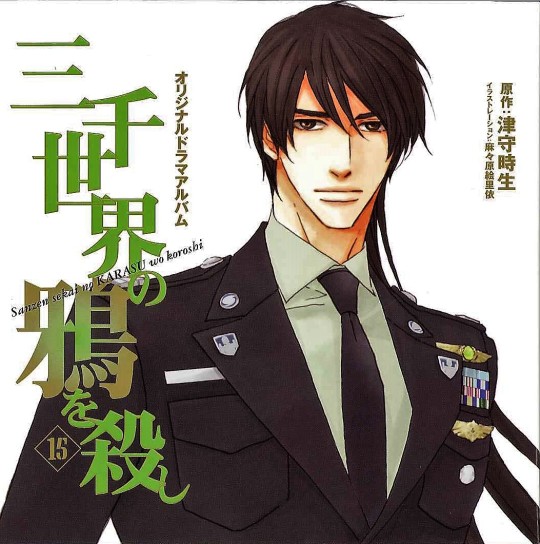
Release Date: 2018/05/31
Cast: S C R E A M I N G ! ! !
Suwabe Junichi
Miki Shinichirou
Canna Nobutoshi
Miyake Kenta
Katsuki Masako
Kawasaki Eriko
Synopsis: Fifteenth? installment of the series.
17 notes
·
View notes
Photo

New Post has been published on https://freenews.today/2021/03/18/super-formula-hiroki-otsu-feels-pressure-of-red-bull-livery/
Super Formula: Hiroki Otsu feels pressure of Red Bull livery

Otsu has been chosen to drive Mugen’s #15 car this season under the ‘Red Bull Mugen Team Goh’ banner, joining 2020 title contender Tomoki Nojiri in the team’s line-up.
He effectively replaces Ukyo Sasahara, who ended up contesting the full 2020 season as COVID-19 travel restrictions prevented Red Bull junior Juri Vips from taking up the seat.
It marks the first time that the team’s second car has been permanently assigned to anybody other than a member of the Red Bull Junior Team since the seat’s creation in 2017.
Read Also:
After making his Super Formula debut in the final race of 2020 as a substitute for an unwell Tadasuke Makino at Nakajima Racing, Otsu admitted he thought he had no chance of a full-time call-up before being told in the middle of January that the drive was his.
“I wasn’t sure if the #15 car would run at all this year, so I had given up,” Otsu told the official Super Formula website. “But Team Goh, Red Bull, Honda and Mugen decided to give me their backing and chose me.
“I wasn’t expecting that, so I was really surprised and happy when I heard about it. But I also felt a lot of pressure of representing the Red Bull colours.”
However, Otsu says the atmosphere within the Mugen garage so far has been positive following his first test with the team earlier this month at Suzuka, where he set the second-fastest time behind Ryo Hirakawa.
“The team itself doesn’t put too much pressure on me to be quick,” he said. “Instead they encourage me to gradually get used to it and build up the rhythm so I can show my performance.
“There are a lot of young people within the team and morale is high, they are working hard to help me go faster, so it has been easy so far.
“With the car I’m not there yet, and there are still a lot of areas where I can’t attack. I’m trying to compensate for that a bit by adjusting the car and I’m adjusting my driving.
“I’m also sharing information with Nojiri-san, so using his experience we can work out what works and what doesn’t. We work well as a two-car team.”
At 26, Otsu is by some distance the oldest rookie in the 2021 field, five years the senior of Toyota proteges Ritomo Miyata and Sena Sakaguchi.
This is partly because he got started in car racing relatively late, graduating from the Suzuka Racing School in 2013 at the age of 19, while he also fell off the single-seater ladder when he lost his All-Japan Formula 3 drive in 2018 before being handed a second chance in 2019 as a last-minute replacement for Enaam Ahmed at ThreeBond.
That season led to a test chance in the Suzuka rookie test at the end of the year with Nakajima Racing, but he was beaten to the vacancy at the team by fellow Honda youngster Toshiki Oyu.
He focussed entirely on SUPER GT last year after being promoted to the GT500 ranks with Nakajima, sharing the team’s Dunlop-shod Honda with Takuya Izawa – who will act as Otsu’s advisor in Super Formula this year.
“I didn’t race for about three years when I was in high school,” said Otsu. “I’ll turn 27 this year, so I’m a bit behind the others. I haven’t always been on the path to the elite; I’ve had to take some detours, so I’m an ‘old rookie’!
“But this year I’ve been given this opportunity and I am determined to beat the other rookies and young drivers. As I’m driving under the Red Bull banner, I have to show what I am capable of, and I want people to think, ‘He may be a rookie, but he’s fast’ this year.”

Hiroki Otsu(Red Bull MUGEN Team Goh)
Photo by: Masahide Kamio
Source
0 notes
Text
THE UNTOLD STORY OF JAPAN’S SECRET SPY AGENCY

EVERY WEEK IN Tokyo’s Ichigaya district, about three miles northeast of the bright neon lights and swarming crowds in the heart of Shibuya, a driver quietly parks a black sedan-style car outside a gray office building. Before setting off on a short, 10-minute drive south, he picks up a passenger who is carrying an important package: top-secret intelligence reports, destined for the desks of the prime minister’s closest advisers.
Known only as “C1,” the office building is located inside a high-security compound that houses Japan’s Ministry of Defense. But it is not an ordinary military facility – it is a secret spy agency headquarters for the Directorate for Signals Intelligence, Japan’s version of the National Security Agency.
The directorate has a history that dates back to the 1950s; its role is to eavesdrop on communications. But its operations remain so highly classified that the Japanese government has disclosed little about its work – even the location of its headquarters. Most Japanese officials, except for a select few of the prime minister’s inner circle, are kept in the dark about the directorate’s activities, which are regulated by a limited legal framework and not subject to any independent oversight.
Now, a new investigation by the Japanese broadcaster NHK — produced in collaboration with The Intercept — reveals, for the first time, details about the inner workings of Japan’s opaque spy community. Based on classified documents and interviews with current and former officials familiar with the agency’s intelligence work, the investigation shines light on a previously undisclosed internet surveillance program and a spy hub in the south of Japan that is used to monitor phone calls and emails passing across communications satellites.

Night view of the C1 building, inside Japan’s Ministry of Defense compound in Ichigaya.
According to the current and former officials, the Directorate for Signals Intelligence, or DFS, employs about 1,700 people and has at least six surveillance facilities that eavesdrop around the clock on phone calls, emails, and other communications. (The NSA, in comparison, has said it has a workforce of more than 30,000 and Britain’s signals intelligence agency claims more than 6,000 staff.) The communications collected at the spy facilities are sent back to analysts who work inside the C1 building, which has four underground floors and eight above ground.
“Very few people know what the DFS is doing and can enter the building,” according to an active-duty official with knowledge of the directorate’s operations, who spoke on condition of anonymity because they were not authorized to talk to the media. The official agreed to share details about the directorate after The Intercept and NHK last year revealed that the spy agency had obtained a mass surveillance system called XKEYSCORE, which is used to sift through copies of people’s emails, online chats, internet browsing histories, and information about social media activity. The official said that they believed the directorate’s use of XKEYSCORE was “not permissible” under the Japanese Constitution, which protects people’s right to privacy.
The official believed the directorate’s use of XKEYSCORE was “not permissible” under the Japanese Constitution.
The directorate – known in Japanese as the “Denpa-Bu,” meaning “electromagnetic wave section” – currently has 11 different departments, each focused on a different subject, such as information analysis, public safety and security, and cryptography. However, the departments are kept separate from each other and there is limited communication between them, the active-duty official said. Each department in the C1 building has a different lock installed on the rooms it uses, and these can only be accessed by a select group of people who have the appropriate security clearance, access codes, and identification. The directorate operates as the largest arm of Japan’s Defense Intelligence Agency, which has other divisions focused on, for example, analyzing satellite imagery, sources said.
Atsushi Miyata, who between 1987 and 2005 worked with the directorate and the Ministry of Defense, said that his work for the spy agency had involved monitoring neighboring countries, such as North Korea, and their military activities. But the agency’s culture of intense secrecy meant that it was reluctant to share information it collected with other elements of the Japanese government. “They did not share the data inside of [the] Defense Ministry properly,” said Miyata. “Even inside of the Defense Ministry, the report was not put on the table. So the people did not understand what we were doing.”
The directorate is accomplished at conducting surveillance, but has a tendency to be excessively secretive about its work, according to classified documents The Intercept disclosed last year. A 2008 NSA memo described its Japanese counterparts as being “still caught in a Cold War way of doing business” and “rather stove-piped.” The U.S. continues to work closely with Japan’s intelligence community, however, and collaborates with the country to monitor the communications of countries across Asia.
ABOUT 700 MILES southwest of Tokyo, there are two small towns called Tachiarai and Chikuzen, which have a combined population of about 44,000 people. Japan’s military, known as the Self-Defense Forces, has a base situated on a patch of grassy farmland in between the towns. But the base is not used to train soldiers. It is one of the country’s most important spy hubs.
For years, the large antennae inside the secure compound, which are concealed underneath what look like giant golf balls, attracted concerns from local residents who were worried that the powerful radio waves they emitted might damage their health or interfere with their televisions. The Japanese government sent senior officials to reassure the locals that there would be no problems, and the government began paying the Chikuzen council an annual fee of about $100,000 as compensation for the disturbance caused by the base. But the function of the antennae was never revealed.
A top-secret document from the directorate offers unprecedented insight into some of the Tachiarai base’s activities. The document – an English-language PowerPoint presentation – appears to have been shared with the NSA during a meeting in February 2013, at which the Japanese spy agency’s then-deputy director was scheduled to discuss intelligence-gathering issues with his American counterparts. The presentation was contained in the archive of classified files provided to The Intercept by Edward Snowden. No internal documents from Japan’s surveillance agency have ever been publicly disclosed before.
According to the presentation, Japan has used Tachiarai for a covert internet surveillance program code-named MALLARD. As of mid-2012, the base was using its antennae to monitor communications passing across satellites. Each week, it collected records about some 200,000 internet sessions, which were then being stored and analyzed for a period of two months. Between December 2012 and January 2013, Tachiarai began using the surveillance technology to collect information about potential cyberattacks. As a result, its data collection rapidly increased, and it began sweeping up information about 500,000 internet sessions every hour – 12 million every day. Despite this, the directorate indicated that it was only able to detect a single email that was linked to an apparent cyberattack. It struggled to cope with the amount of data it was harvesting and asked the NSA for help. “We would like to see processing procedure which the U.S. side employs in order not to affect traditional SIGINT collection,” the directorate told the NSA, “and would appreciate your technical assistance.”
“Even inside of the Defense Ministry, the people did not understand what we were doing.”
Chris Augustine, a spokesperson for the NSA, declined to answer questions about the agency’s cooperation with Japan, saying in a statement that he would “neither confirm nor deny information concerning potential relationships with foreign intelligence services.” He added: “Any cooperation among intelligence services is conducted lawfully, in a manner that mutually strengthens national security.”
The directorate’s work at Tachiarai appears to focus on monitoring the activities of foreign countries in the region. It is unclear whether it collects Japanese citizens’ communications, either deliberately or incidentally, through dragnet programs like MALLARD. The law in Japan prohibits wiretapping landlines without a court order, but monitoring communications as they are being transmitted wirelessly across satellites is a gray area, Japanese legal experts say, because there are no legal precedents in the country that place limitations upon that kind of surveillance, though there is a general right to privacy outlined in the constitution.
According to Richard Tanter, a professor at the University of Melbourne who specializes in researching government surveillance capabilities, more than 200 satellites are “visible” from Tachiarai, meaning the base can intercept communications and data passing between them using its surveillance systems. Of the 200-plus satellites, said Tanter, at least 30 are Chinese and potential targets for ongoing surveillance. Moreover, he added, “satellites owned or operated by Russia, South Korea, Taiwan, and even the United States or European states may be targeted” by the Tachiarai facility.
Snowden, who worked at a U.S. military base in Japan as an NSA contractor between 2009 and 2012, told The Intercept that Japanese spies appeared to have targeted “entire internet service providers, not just any one customer.” Referencing the MALLARD program, he said that there were not “500,000 terrorist communications happening in one year, much less one hour. … Is this authorized in law in a way that’s well-understood, that’s well-regulated, to make sure they are only targeting bad guys and not simply everything that they see?”
A spokesperson for Japan’s Ministry of Defense refused to discuss MALLARD, but said that the country’s “information-gathering activities” are necessary for national security and “done in compliance with laws and regulations.” The spokesperson acknowledged that Japan has “offices throughout the country” that are intercepting communications; however, he insisted that the surveillance is focused on military activities and “cyberthreats” and is “not collecting the general public’s information.” When pressed to explain how the country’s spy systems distinguish ordinary people’s communications from those related to threats, the spokesperson would not provide details on the grounds that doing so “may be a hindrance to effective future information activities.”

A woman works on her laptop on the viewing platform of the Tokyo Skytree on March 29, 2018, in Tokyo, Japan.
IN OCTOBER 2013, the Directorate for Signals Intelligence was planning to launch an operation aimed at what it described as the “Anonymous internet,” according to the 2013 presentation. This suggests that the directorate wanted to collect data about people’s usage of privacy tools such as Tor, which allows people to mask their computer’s IP address while they browse the internet. Tor is often used by journalists and dissidents to evade government surveillance; however, it is also used by child abusers and other criminals to plan or carry out illegal acts. In April 2013, it was reported that Japanese police were urging internet service providers to find ways to block people who were using Tor to commit crimes. In 2012, the country’s police investigators were repeatedly thwarted by a hacker known as the “Demon Killer,” who posted a series of death threats online. The hacker used Tor to successfully evade detection for seven months, which was a major source of embarrassment for Japanese police — and likely fueled demand for new surveillance capabilities.
Snowden told The Intercept that Japanese spies appeared have targeted “entire internet service providers, not just any one customer.”
The directorate’s activities at Tachiarai and elsewhere are aided by an organization called J6, which is a specialist technical unit connected to Japan’s Ministry of Defense, according to sources familiar with its operations. However, the cooperation between the directorate and J6 has been inhibited by the extreme secrecy that is pervasive within the Japanese government, with each agency apparently reluctant to open up to the other about its respective capabilities. In the 2013 presentation, Japanese officials from the directorate described J6’s role to the NSA, but admitted that they had relied on “assumptions” to do so, because “J6 function is not disclosed to us.”
According to the presentation, the directorate’s role is to carry out surveillance and analyze intelligence. The role of J6 includes analyzing malware and developing countermeasures – such as firewalls – to prevent hacks of Japanese computer systems. A third organization, called the Cabinet Intelligence and Research Organization, or CIRO, is the ultimate beneficiary of intelligence that is collected. Headed by a powerful figure named Shigeru Kitamura, it oversees the work of both the directorate and J6 and is connected to the prime minister’s office, based out of a building known as “H20,” a short walk from the prime minister’s official residence in Tokyo’s Chiyoda district.
Between 2000 and 2005, prior to development of the MALLARD internet surveillance program, expansion work took place at the Tachiarai facility. At that time, the then-town council chair, Hitoshi Miyahara, was shown a map of the construction plans, which revealed that a tunnel was being built below the base. Miyahara was allowed to visit the construction site, he said, but was prevented from entering the underground area. The current town council chair, Tsutomu Yano, had a similar experience. He visited the facility about four years ago and was shown around a gymnasium, a cafeteria, and a conference room. He was prevented from accessing the underground tunnel and a space he was told was used for “communications.” Yano said he repeatedly questioned the Self-Defense Forces about the Tachiarai facility’s function. But he never received any answers.
Ed Noguchi contributed reporting and translation.
Documents
Documents published with this article:
DFS briefing Feb 2013
Cyber paper Japan DFS
DFS and NSA partnership
1 note
·
View note
Text
2017 Summer Competitions
Non-comprehensive list of small competitions in the early 2017-18 season where top skaters may debut their new programs. Some competitions are domestic, some are international. Withdrawals with no notice are very common for these competitions. For more events and info, please check out the appropriate threads on Goldenskate.
-----------------------------------------------------------------------
UNITED STATES
BROADMOOR OPEN (Website & results)
Time & place: June 20-23, Broadmoor Skating Club (Colorado Springs, CO)
Notable entries: Senior - Alexei Krasnozhon (SP only), Timothy Dolensky, Jordan Moeller, Jimmy Ma, Bradie Tennell, Ashley Lin, Ashley Kim, Angela Wang, Vivian Le. Junior - Alysia Liu, Angelina Huang, Ting Cui, Sihyeong Lee (SP only).
How to watch: Paid livestream by ProEventPhoto. Fancams.
AERIAL JUMP CHALLENGE (Facebook & results, Twitter)
Time & place: June 23-24, Broadmoor Skating Club (Colorado Springs, CO)
Notable entries: Team event, individual event
How to watch: Facebook live stream of last day
Note: A jumping competition held alongside Broadmoor Open with prize money for the winners.
LAKE PLACID SUMMER FIGURE SKATING CHAMPIONSHIPS (Website & results)
Time & place: June 28 - July 1, Skating Club of Lake Placid (Lake Placid, NY)
Notable entries: Senior - Ross Miner
How to watch: Paid live stream. Fancams.
LOS ANGELES OPEN (Website & results)
Time & place: July 7-9, Los Angeles FSC (Burbank, CA)
Notable entries: Senior - Karen Chen (SP only), Starr Andrews, Vivian Le, Kaitlyn Nguyen, Sean Rabbitt. Junior - Audrey Shin, Akari Nakahara.
How to watch: Fancams
SKATE MILWAUKEE (Website & results)
Time & place: July 12-16, Wisconsin FSC (Milwaukee, WI)
Notable entries: Senior - Jason Brown, Jordan Moeller, Bradie Tennell, Caitlin Fields/Ernie Stevens
How to watch: Fancams
SKATE DETROIT (Website & results)
Time & place: July 18-22, Detroit Skating Club (Bloomfield Hills, MI)
Schedule
Notable entries: Senior - Mirai Nagasu, Courtney Hicks, Vincent Zhou, Grant Hochstein, Keegan Messing, Jessica Calalang/Zack Sidhu, Deanna Stellato/Nathan Bartholomay, Chelsea Liu/Brian Johnson, Miu Suzaki/Ryuichi Kihara, Jessica Pfund/Joshua Santillan, Caitlin Fields/Ernie Stevens
How to watch: Paid livestream by ProEventPhoto. Fancams.
LAKE PLACID ICE DANCE INTERNATIONAL (Website & results)
Time & place: July 26-29, Lake Placid, NY
Schedule
Notable entries: Full list. Senior - Rachel Parsons/Michael Parsons, Lorraine McNamara/Quinn Carpenter, Elliana Pogrebinsky/Alex Benoit, Karina Manta/Joseph Johnson. Junior - Christina Carreira/Anthony Ponomarenko.
How to watch: Paid live stream. Youtube videos.
Note: This is an international ISU competition. There is also a club portion of the competition.
GLACIER FALLS SUMMER CLASSIC (Website & results, Twitter, Facebook)
Time & place: July 27-30, Glacier Falls FSC (Anaheim, CA)
Schedule
Notable entries: Senior - Jason Brown, Grant Hochstein, Ross Miner, Sean Rabbitt, Yaroslav Paniot, Karen Chen, Polina Edmunds, Mae Berenice Meite, Kaitlyn Nguyen, Caroline Zhang. Junior - Angelina Huang, Ashley Lin, Alysia Liu, Akari Nakahara, Audrey Shin.
How to watch: Fancams. Complete event available for free on Icenetwork after the competition.
PHILADELPHIA SUMMER CHAMPIONSHIPS (Website & results)
Time & place: Aug. 2-5, IceWorks Skating Club (Aston, PA)
Schedule
Notable entries: Senior - Daisuke Murakami, Emmanuel Savary, Deanna Stellato/Nathan Bartholomay
How to watch: Paid livestream by ProEventPhoto. Fancams.
Note: This is the club portion of the competition.
PHILADELPHIA SUMMER INTERNATIONAL (Website)
Time & place: Aug. 3-6, IceWorks Skating Club (Aston, PA)
Schedule
Notable entries: Senior - Karen Chen, Tessa Hong, Angela Wang, Amber Glenn, Hanul Kim, Courtney Hicks, Bradie Tennell, Starr Andrews, Nicole Rajicova, Timothy Dolensky, Alexei Krasnozhon, Alexander Johnson, Jordan Moeller, Sean Rabbitt, Max Aaron, June Hyoung Lee, Andrew Torgashev, Yaroslav Paniot
How to watch: Paid livestream by ProEventPhoto. Fancams: 1, 2, 3, 4
Note: This is the international ISU portion of the competition.
DANCE/PAIRS CHICAGO CHAMPIONSHIPS (Website & results)
Time & place: Aug. 11-13, Fox Valley Ice Arena (Geneva, IL)
Schedule
Notable entries: Senior - Kaitlin Hawayek/Jean Luc Baker, Kana Muramoto/Chris Reed, Angelique Abachkina/Louis Thauron, Alexandra Nazarova/Maxim Nikitin
How to watch: Possible fancams.
-----------------------------------------------------------------------
CANADA (NATIONAL SUMMER SERIES)
MINTO SUMMER SKATE (Website, Results, Facebook, Twitter)
Time & place: July 26-31, Minto Skating Club (Gloucester, ON)
Schedule
Notable entries: Senior - Liam Firus, Stephen Gogolev, Nicolas Nadeau, Julian Yee, Roman Sadovsky, Nam Nguyen, Alaine Chartrand
How to watch: Free live stream
WILD ROSE INVITATIONAL (Website, Results)
Time & place: Aug. 4-7, Leduc, AB
Schedule
Notable entries: Full list. Senior - Kaetlyn Osmond, Larkyn Austman
How to watch: Free live stream
QUEBEC SUMMER CHAMPIONSHIPS (Website, Results)
Time & place: Aug. 10-13, Montreal, QC
Schedule
Notable entries: Full list. Senior - Meagan Duhamel/Eric Radford, Marissa Castelli/Mervin Tran, Kirsten Moore-Towers/Michael Marinaro, Sumire Suto/Francis Boudreau-Audet, Tae Ok Ryom/Ju Sik Kim, Laurence Fournier-Beaudry/Nikolaj Sorensen, Marie-Jade Lauriault/Romain Le Gac, Olivia Smart/Adrian Diaz, Elladj Balde, Liam Firus, Nicolas Nadeau, Alaine Chartrand
How to watch: Free live stream
SKATE ONTARIO SUMMER SKATE (Website, Results)
Time & place: Aug. 17-20, Thornhill, ON
Schedule
Notable entries: Full list. Senior - Elizabet Tursynbaeva, Stephen Gogolev, Nam Nguyen, Keegan Messing, Roman Sadovsky, Lubov Iliushechkina/Dylan Moscovitch
How to watch: Free live stream
BC SUMMER SKATE (Website & results)
Time & place: Aug. 17-20, Burnaby, BC
Schedule
Notable entries: Full list. Senior - Kaetlyn Osmond, Larkyn Austman, Sarah Tamura, Kevin Reynolds
How to watch: Free live stream
-----------------------------------------------------------------------
JAPAN
See here for a complete list. Thanks to tadakixd for translation help!
KANTO SUMMER TROPHY (Website, Results)
Time & place: Aug. 3-6, Chiba
Schedule
Notable entries: Full list. Senior - Wakaba Higuchi. Junior - Akari Matsubara, Akari Matsuoka.
How to watch: News clips on Japanese TV
55TH KITAKYUSHU OPEN / IZUKA ICE PALACE CUP (Website)
Time & place: Aug. 7-10, Fukuoka
Schedule
Notable entries: Full list. Senior - Rika Hongo
How to watch: News clips on Japanese TV
GENSAN SUMMER CUP (Website, Results)
Time & place: Aug. 11-13, Otsu
Schedule
Notable entries: Full list. Senior - Taichi Honda, Kazuki Tomono, Mai Mihara, Kaori Sakamoto, Rin Nitaya, Yura Matsuda. Junior - Mitsuki Sumoto, Riko Takino, Mako Yamashita, Yuhana Yokoi, Akari Matsuoka, Saya Suzuki.
How to watch: News clips on Japanese TV
TOKYO SUMMER GAMES (Website)
Time & place: Aug. 25-27, Tokyo
Schedule
Notable entries: Full list. Senior - Wakaba Higuchi, Yuka Nagai, Daichi Miyata. Junior - Akari Matsubara, Rion Sumiyoshi.
How to watch: News clips on Japanese TV
-----------------------------------------------------------------------
OTHER
SOUTH KOREA JGP & NEBELHORN SELECTION EVENT (GS thread)
Time & place: July 28-30, Mokdong Ice Rink, Seoul
Schedule
Notable entries: Full list. Senior - Jun Hwan Cha, Jinseo Kim, June Hyoung Lee, Nahyun Kim, Dabin Choi, Soyoun Park, Yura Min/Alexander Gamelin, Su Yeon Kim/Hyungtae Kim. Junior - Sihyeong Lee, Yelim Kim, Eunsoo Lim, Young You
How to watch: KBS1 broadcast, last groups of senior ladies. Fancams: 1, 2.
Note: This competition will determine the senior skaters sent to Nebelhorn Trophy for the Olympic Qualifying Event, as well as junior assignments for the Junior Grand Prix.
ASIAN OPEN TROPHY (Results, Facebook)
Time & place: Aug. 2-5, Hong Kong
Schedule
Notable entries: Senior - Keiji Tanaka, Ryuju Hino, Kaori Sakamoto, Yuna Shiraiwa, Su Yeon Kim/Hyungtae Kim, Miu Suzaki/Ryuichi Kihara. Junior - Sena Miyake, Yuto Kishina, Mako Yamashita, Rika Kihira, Eunsoo Lim, Yelim Kim, Audrey Shin, Hannah Harrell
How to watch: Free live stream of senior ladies' and men's FS. Fancams: 1, 2, 3
Note: This is an international ISU competition.
152 notes
·
View notes
Link
THE UNTOLD STORY OF JAPAN’S SECRET SPY AGENCY Ryan Gallagher May 19 2018, 9:00 p.m. In partnership with EVERY WEEK IN Tokyo’s Ichigaya district, about three miles northeast of the bright neon lights and swarming crowds in the heart of Shibuya, a driver quietly parks a black sedan-style car outside a gray office building. Before setting off on a short, 10-minute drive south, he picks up a passenger who is carrying an important package: top-secret intelligence reports, destined for the desks of the prime minister’s closest advisers. Known only as “C1,” the office building is located inside a high-security compound that houses Japan’s Ministry of Defense. But it is not an ordinary military facility – it is a secret spy agency headquarters for the Directorate for Signals Intelligence, Japan’s version of the National Security Agency. The directorate has a history that dates back to the 1950s; its role is to eavesdrop on communications. But its operations remain so highly classified that the Japanese government has disclosed little about its work – even the location of its headquarters. Most Japanese officials, except for a select few of the prime minister’s inner circle, are kept in the dark about the directorate’s activities, which are regulated by a limited legal framework and not subject to any independent oversight. Join Our Newsletter Original reporting. Fearless journalism. Delivered to you. I’m in Now, a new investigation by the Japanese broadcaster NHK — produced in collaboration with The Intercept — reveals, for the first time, details about the inner workings of Japan’s opaque spy community. Based on classified documents and interviews with current and former officials familiar with the agency’s intelligence work, the investigation shines light on a previously undisclosed internet surveillance program and a spy hub in the south of Japan that is used to monitor phone calls and emails passing across communications satellites. C1-2-1526654625 Night view of the C1 building, inside Japan’s Ministry of Defense compound in Ichigaya. Photo: NHK According to the current and former officials, the Directorate for Signals Intelligence, or DFS, employs about 1,700 people and has at least six surveillance facilities that eavesdrop around the clock on phone calls, emails, and other communications. (The NSA, in comparison, has said it has a workforce of more than 30,000 and Britain’s signals intelligence agency claims more than 6,000 staff.) The communications collected at the spy facilities are sent back to analysts who work inside the C1 building, which has four underground floors and eight above ground. “Very few people know what the DFS is doing and can enter the building,” according to an active-duty official with knowledge of the directorate’s operations, who spoke on condition of anonymity because they were not authorized to talk to the media. The official agreed to share details about the directorate after The Intercept and NHK last year revealed that the spy agency had obtained a mass surveillance system called XKEYSCORE, which is used to sift through copies of people’s emails, online chats, internet browsing histories, and information about social media activity. The official said that they believed the directorate’s use of XKEYSCORE was “not permissible” under the Japanese Constitution, which protects people’s right to privacy. The official believed the directorate’s use of XKEYSCORE was “not permissible” under the Japanese Constitution. The directorate – known in Japanese as the “Denpa-Bu,” meaning “electromagnetic wave section” – currently has 11 different departments, each focused on a different subject, such as information analysis, public safety and security, and cryptography. However, the departments are kept separate from each other and there is limited communication between them, the active-duty official said. Each department in the C1 building has a different lock installed on the rooms it uses, and these can only be accessed by a select group of people who have the appropriate security clearance, access codes, and identification. The directorate operates as the largest arm of Japan’s Defense Intelligence Agency, which has other divisions focused on, for example, analyzing satellite imagery, sources said. Atsushi Miyata, who between 1987 and 2005 worked with the directorate and the Ministry of Defense, said that his work for the spy agency had involved monitoring neighboring countries, such as North Korea, and their military activities. But the agency’s culture of intense secrecy meant that it was reluctant to share information it collected with other elements of the Japanese government. “They did not share the data inside of [the] Defense Ministry properly,” said Miyata. “Even inside of the Defense Ministry, the report was not put on the table. So the people did not understand what we were doing.” The directorate is accomplished at conducting surveillance, but has a tendency to be excessively secretive about its work, according to classified documents The Intercept disclosed last year. A 2008 NSA memo described its Japanese counterparts as being “still caught in a Cold War way of doing business” and “rather stove-piped.” The U.S. continues to work closely with Japan’s intelligence community, however, and collaborates with the country to monitor the communications of countries across Asia. DFS surveillance facilities in Higashi Chitose (top left/top), Tachiarai (top right/second), Kofunato (bottom left/third), and Miho (bottom right/fourth).Screenshots: Google map ABOUT 700 MILES southwest of Tokyo, there are two small towns called Tachiarai and Chikuzen, which have a combined population of about 44,000 people. Japan’s military, known as the Self-Defense Forces, has a base situated on a patch of grassy farmland in between the towns. But the base is not used to train soldiers. It is one of the country’s most important spy hubs. For years, the large antennae inside the secure compound, which are concealed underneath what look like giant golf balls, attracted concerns from local residents who were worried that the powerful radio waves they emitted might damage their health or interfere with their televisions. The Japanese government sent senior officials to reassure the locals that there would be no problems, and the government began paying the Chikuzen council an annual fee of about $100,000 as compensation for the disturbance caused by the base. But the function of the antennae was never revealed. A top-secret document from the directorate offers unprecedented insight into some of the Tachiarai base’s activities. The document – an English-language PowerPoint presentation – appears to have been shared with the NSA during a meeting in February 2013, at which the Japanese spy agency’s then-deputy director was scheduled to discuss intelligence-gathering issues with his American counterparts. The presentation was contained in the archive of classified files provided to The Intercept by Edward Snowden. No internal documents from Japan’s surveillance agency have ever been publicly disclosed before. According to the presentation, Japan has used Tachiarai for a covert internet surveillance program code-named MALLARD. As of mid-2012, the base was using its antennae to monitor communications passing across satellites. Each week, it collected records about some 200,000 internet sessions, which were then being stored and analyzed for a period of two months. Between December 2012 and January 2013, Tachiarai began using the surveillance technology to collect information about potential cyberattacks. As a result, its data collection rapidly increased, and it began sweeping up information about 500,000 internet sessions every hour – 12 million every day. Despite this, the directorate indicated that it was only able to detect a single email that was linked to an apparent cyberattack. It struggled to cope with the amount of data it was harvesting and asked the NSA for help. “We would like to see processing procedure which the U.S. side employs in order not to affect traditional SIGINT collection,” the directorate told the NSA, “and would appreciate your technical assistance.” “Even inside of the Defense Ministry, the people did not understand what we were doing.” Chris Augustine, a spokesperson for the NSA, declined to answer questions about the agency’s cooperation with Japan, saying in a statement that he would “neither confirm nor deny information concerning potential relationships with foreign intelligence services.” He added: “Any cooperation among intelligence services is conducted lawfully, in a manner that mutually strengthens national security.” The directorate’s work at Tachiarai appears to focus on monitoring the activities of foreign countries in the region. It is unclear whether it collects Japanese citizens’ communications, either deliberately or incidentally, through dragnet programs like MALLARD. The law in Japan prohibits wiretapping landlines without a court order, but monitoring communications as they are being transmitted wirelessly across satellites is a gray area, Japanese legal experts say, because there are no legal precedents in the country that place limitations upon that kind of surveillance, though there is a general right to privacy outlined in the constitution. According to Richard Tanter, a professor at the University of Melbourne who specializes in researching government surveillance capabilities, more than 200 satellites are “visible” from Tachiarai, meaning the base can intercept communications and data passing between them using its surveillance systems. Of the 200-plus satellites, said Tanter, at least 30 are Chinese and potential targets for ongoing surveillance. Moreover, he added, “satellites owned or operated by Russia, South Korea, Taiwan, and even the United States or European states may be targeted” by the Tachiarai facility. Snowden, who worked at a U.S. military base in Japan as an NSA contractor between 2009 and 2012, told The Intercept that Japanese spies appeared to have targeted “entire internet service providers, not just any one customer.” Referencing the MALLARD program, he said that there were not “500,000 terrorist communications happening in one year, much less one hour. … Is this authorized in law in a way that’s well-understood, that’s well-regulated, to make sure they are only targeting bad guys and not simply everything that they see?” A spokesperson for Japan’s Ministry of Defense refused to discuss MALLARD, but said that the country’s “information-gathering activities” are necessary for national security and “done in compliance with laws and regulations.” The spokesperson acknowledged that Japan has “offices throughout the country” that are intercepting communications; however, he insisted that the surveillance is focused on military activities and “cyberthreats” and is “not collecting the general public’s information.” When pressed to explain how the country’s spy systems distinguish ordinary people’s communications from those related to threats, the spokesperson would not provide details on the grounds that doing so “may be a hindrance to effective future information activities.” TOKYO, JAPAN - MARCH 29: A cafe employee works on her laptop on the viewing platform of the Tokyo Skytree on March 29, 2018 in Tokyo, Japan. The tower was opened to the public in May 2012 and is the tallest tower in the world and the second tallest structure in the world after the Burj Khalifa in Dubai. It is primarily a television and radio broadcast site for Japan's Kanto region but is also a popular tourist site attracting thousands of visitors each month. (Photo by Carl Court/Getty Images) A woman works on her laptop on the viewing platform of the Tokyo Skytree on March 29, 2018, in Tokyo, Japan. Photo: Carl Court/Getty Images IN OCTOBER 2013, the Directorate for Signals Intelligence was planning to launch an operation aimed at what it described as the “Anonymous internet,” according to the 2013 presentation. This suggests that the directorate wanted to collect data about people’s usage of privacy tools such as Tor, which allows people to mask their computer’s IP address while they browse the internet. Tor is often used by journalists and dissidents to evade government surveillance; however, it is also used by child abusers and other criminals to plan or carry out illegal acts. In April 2013, it was reported that Japanese police were urging internet service providers to find ways to block people who were using Tor to commit crimes. In 2012, the country’s police investigators were repeatedly thwarted by a hacker known as the “Demon Killer,” who posted a series of death threats online. The hacker used Tor to successfully evade detection for seven months, which was a major source of embarrassment for Japanese police — and likely fueled demand for new surveillance capabilities. Snowden told The Intercept that Japanese spies appeared have targeted “entire internet service providers, not just any one customer.” The directorate’s activities at Tachiarai and elsewhere are aided by an organization called J6, which is a specialist technical unit connected to Japan’s Ministry of Defense, according to sources familiar with its operations. However, the cooperation between the directorate and J6 has been inhibited by the extreme secrecy that is pervasive within the Japanese government, with each agency apparently reluctant to open up to the other about its respective capabilities. In the 2013 presentation, Japanese officials from the directorate described J6’s role to the NSA, but admitted that they had relied on “assumptions” to do so, because “J6 function is not disclosed to us.” According to the presentation, the directorate’s role is to carry out surveillance and analyze intelligence. The role of J6 includes analyzing malware and developing countermeasures – such as firewalls – to prevent hacks of Japanese computer systems. A third organization, called the Cabinet Intelligence and Research Organization, or CIRO, is the ultimate beneficiary of intelligence that is collected. Headed by a powerful figure named Shigeru Kitamura, it oversees the work of both the directorate and J6 and is connected to the prime minister’s office, based out of a building known as “H20,” a short walk from the prime minister’s official residence in Tokyo’s Chiyoda district. Between 2000 and 2005, prior to development of the MALLARD internet surveillance program, expansion work took place at the Tachiarai facility. At that time, the then-town council chair, Hitoshi Miyahara, was shown a map of the construction plans, which revealed that a tunnel was being built below the base. Miyahara was allowed to visit the construction site, he said, but was prevented from entering the underground area. The current town council chair, Tsutomu Yano, had a similar experience. He visited the facility about four years ago and was shown around a gymnasium, a cafeteria, and a conference room. He was prevented from accessing the underground tunnel and a space he was told was used for “communications.” Yano said he repeatedly questioned the Self-Defense Forces about the Tachiarai facility’s function. But he never received any answers. Ed Noguchi contributed reporting and translation.
0 notes
Photo
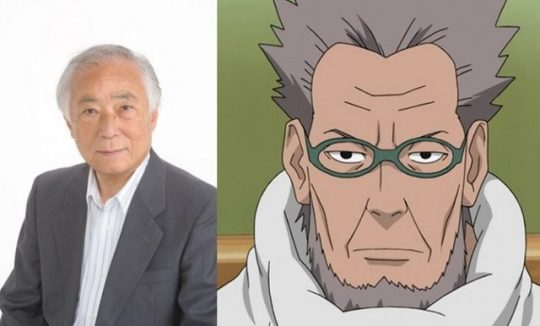
Hikaru Miyata, Pengisi Suara Homura Mitokado Meninggal Dunia
Berita duka datang dari dunia hiburan Jepang, Hikaru Miyata, aktor pengisi suara karakter Homura Mitokado dari serial anime Narutodikabarkan meninggal di sebuah rumah sakit Tokyo. Ia meninggal di usia 87 tahun pada hari Minggu pukul 6:45 pagi, karena diseksi aorta akut, upacara pemakaman pun akan diadakan tanggal 30 September mendatang bersama istrinya, Fumiko, sebagai pendeta utama.
Rekan sesama pengisi suara, Taketora mengatakan di akun Twitter-nya bahwa Miyata merupakan sosok proa yang dikenal selalu tersenyum. Kedua aktor pengisi suara senior ini bertemu setelah masing-masing memainkan peran dalam serial Code Geass: Akito the Exiled.
Hikaru Miyata sendiri telah memainkan banyak peran dalam berbagai acara televisi di Jepang, seperti Dokuganryu Masamune, dan juga film. Sebagai seorang aktor pengisi suara karakter anime, ia tampil di serial anime Naruto sebagai Homura Mitokado, Heat Guy J sebagai Shogun, dan Noein – to your other self sebagai the Wanderer of Time, serta masih banyak lagi.
Serial anime Naruto telah berakhir sejak tahun 2017 lalu, namun ceritanya dilanjutkan dengan judul dan cerita baru, Boruto, yang masih tayang hingga saat ini.
Tim Japanese Station turut berduka cita sedalam-dalamnya atas kepergian Hikaru Miyata, rasa bela sungkawa yang besar kami tujukan untuk keluarga, serta sahabat yang ditinggalkan dan terima kasih telah menyuarakan banyak karakter anime.
The post Hikaru Miyata, Pengisi Suara Homura Mitokado Meninggal Dunia appeared first on Japanese Station.
0 notes
Text
Panasonic und Scrum Ventures geben ein Joint Venture bekannt, um Innovation zu fördern
Check out the latest post https://thenewsrabbit.com/panasonic-und-scrum-ventures-geben-ein-joint-venture-bekannt-um-innovation-zu-fordern/
TOKIO–(BUSINESS WIRE)–Die Panasonic Corporation gab bekannt, dass sie BeeEdge gründet, ein Joint Venture mit Scrum Ventures, einer in San Francisco ansässigen Risikokapitalfirma für die Frühphasenfinanzierung. Mit dem Ziel, eine neue Generation von Produkten zu ermöglichen, wird BeeEdge Technologien innerhalb von Panasonic ermitteln, die nicht vollständig genutzt werden und unabhängige Start-ups einrichten, um diese auf den Markt zu bringen. BeeEdge wird als Beschleuniger auftreten, wobei Panasonic und Scrum ihre Erfahrungen aus der Zusammenarbeit mit und der Unterstützung von Entrepreneuren einbringen.
„Wir freuen uns auf die Zusammenarbeit mit Scrum Ventures aufgrund ihrer Erfahrung bei der Unterstützung von Start-ups. Von der Analyse von Chancen und der Markteinführung von Produkten bis hin zum Austausch von bewährten Verfahren im operativen Geschäft wird Scrum Ventures ein wertvoller Partner dafür sein, die Art und Weise zu optimieren, wie wir unsere Technologien mit neuen innovativen Unternehmen entwickeln“, sagte Tetsuro Homma, Senior Managing Executive Officer von Panasonic Corp.
„Wir wissen, wie man Start-ups, die an bahnbrechenden neuen Technologien arbeiten, erkennt und unterstützt. Wir arbeiten eng mit den Gründern zusammen und stellen sicher, dass sie haben, was sie brauchen, um erfolgreich zu sein. Unser Fachwissen mit Panasonic zu teilen, ist eine großartige Gelegenheit, um Panasonics ungenutzte Innovationen zu vermarkten“, sagte Tak Miyata, Founding Partner von Scrum Ventures.
Panasonic, bekannt für die Entwicklung von Unterhaltungselektronik, die den Lebensstil der Kunden bereichert, hat seine Investitionen erhöht, um neue Erlebnisse der Unterhaltungselektronik und Unternehmen für die nächste Generation zu schaffen. Scrum Ventures ist mit seiner Erfolgsbilanz, neue Trends und Technologien zu identifizieren, und seinem tiefgreifenden Verständnis des Silicon Valley Start-up-Ökosystems bestens aufgestellt, um Fachwissen bei BeeEdge einzubringen und damit Start-ups zu unterstützen. LeTote, Kidadaptive, LiveLike und Realtime Robotics gehören zum Portfolio von Scrum Ventures.
Über Panasonic
Die Panasonic Corporation ist ein weltweit führendes Unternehmen in der Entwicklung verschiedener elektronischer Technologien und Lösungen für Kunden in den Bereichen Unterhaltungselektronik, Housing, Automotive und Business-to-Business. Das Unternehmen, das 2018 sein 100. Firmenjubiläum feiern wird, hat weltweit expandiert und verfügt mittlerweile über 495 Tochtergesellschaften und 91 verbundene Unternehmen, die in dem am 31. März 2017 zu Ende gegangenen Geschäftsjahr einen Nettoumsatz von insgesamt 7,343 Billionen Yen ausweisen konnten. Im Bestreben, durch bereichsübergreifende Innovationen neue Werte zu schaffen, nutzt das Unternehmen seine Technologien, um seinen Kunden bessere Lebensbedingungen und eine bessere Welt zu ermöglichen. Weitere Informationen zu Panasonic finden Sie unter
http://www.panasonic.com/global.
Über Scrum Ventures
Scrum Ventures ist eine Risikokapitalfirma für die Anlaufphase, die in einer Reihe von Branchen in den USA und Asien investiert. Scrum Ventures mit Sitz in San Francisco und ausgedehnter Erfahrung sowie Netzwerken sowohl im Silicon Valley als auch in Japan, verhilft ihren Portfoliounternehmen zu globalen Möglichkeiten und unterstützt Unternehmen bei ihren Innovationen. Scrum Ventures hat kürzlich Scrum Studios vorgestellt, die globale Unternehmen in Japan mit Start-ups im Silicon Valley über Investitionen und Zusammenarbeit verbindet. Erfahren Sie mehr unter
http://scrum.vc.
Quelle: http://news.panasonic.com/global/press/data/2018/03/en180301-4/en180301-4.html
Weitere Links
[Video] Panasonic’s Vision for Home Appliances
https://youtu.be/P-L-135Mz-c
[Pressemitteilung] NTT DOCOMO and Panasonic Collaborate on Pilot Experiment for Full Time Connected IoT Home Appliances Using LPWA Wireless Communication Technology (1. Mrz. 2018)
http://news.panasonic.com/global/press/data/2018/03/en180301-5/en180301-5.html
Die Ausgangssprache, in der der Originaltext veröffentlicht wird, ist die offizielle und autorisierte Version. Übersetzungen werden zur besseren Verständigung mitgeliefert. Nur die Sprachversion, die im Original veröffentlicht wurde, ist rechtsgültig. Gleichen Sie deshalb Übersetzungen mit der originalen Sprachversion der Veröffentlichung ab.
0 notes
Text
Makerspaces Event Recordings + "Are You Global Ready?" The 2017 GEC Online Conference Is Coming!
The Library 2.017 Makerspaces mini-conference recordings have been posted! You can find them at:
Library 2.0 Site - Recordings Page: http://ift.tt/2lDGLjV (must be logged in)
YouTube Conference Playlist: https://www.youtube.com/playlist?list=PLGvt9IyrGCa68EtCWNg2w57IMjSxFJFuT
Library 2.0 YouTube Channel: https://www.youtube.com/c/Library20
Included in the recordings are: the keynote sessions from Heather Moorefield-Lang, June Abbas, Leanne Bowler, Kristin Fontichiaro, and Kyungwon Koh; the pre-conference special webinar with Susan Considine and Mike Cimino from the Fayetteville Free Library on "STEAM and Making at the FFL;" and our general sessions: Tara Smith + Jessica McClean--'Hosting Maker Days and Forging Collaborative Partnerships in Anticipation of an Academic Library Makerspace;' Alisha Wilson + Nancy Stetzinger--'Keeping It Fresh: How to Create and Sustain a Maker Culture that Motivates Teens;' Ben Rearick--'Proposal for a Theoretical Framework for Small + Rural Libraries Supporting Entrepreneurs;' Rachel Seltz--'Volunteers at Your Library Makerspace;' IdaMae Craddock--'From Makerspace to Learning Commons: What's Next;' Rebecca Ferrer--'From Zero to System Wide Makerspace in 3 Grants and 4 Years;' Josh Weisgrau +Jessica Parker--'Librarians are Maker Champions: Here's how you can be too!;' Kristina A. Holzweiss--'Making a Difference:' Morgan Chivers + Katie Musick Peery--'Walking the Walk: iterative design in student staff service learning projects;' Hilda Gómez--'Bibliotecas Activas;' Abigail L. Phillips--'Finding What Fits: Approachability of Makerspaces and Making in the Library;' Robert Pronovost--'Low Cost Tools to Bring Making into Your Library;' Stephanie Piper--'Smart Working for Active Makerspaces;' and Martin Wallace, Katie Peery, + Morgan Chivers--'Making Maker Literacies: Competencies-based Course Integration of Academic Library Makerspaces.'
The 8th Annual Global Education Conference (GEC)
November 13 - 16, 2017
The Global Education Conference Network's eighth annual worldwide collaboration on globally-connected education will take place around the clock starting Monday, November 13, and continue through Thursday, November 16.
This event is FREE to attend, but does require that you REGISTER! Please register HERE.
The GEC features thought leaders from the world of education and beyond, is completely free to attend and takes place online in live webinar format. We invite you to join the 25,600 GEC community members (from 170+ countries) and actively participate in dozens of sessions focused on international education topics. Some important conference updates are below:
Still Taking Proposals
Keynotes + Sessions
Thanks to the GEC Sponsors + Partners
We're Still Taking Proposals!
The call for proposals is open until November 5th. We encourage all to submit by following the detailed directions listed here. If accepted, you can present in your time zone at a time that is convenient to you!
Keynotes + Sessions
As usual, Lucy Gray is putting together an INCREDIBLE keynote speaker lineup and it is still growing.
Mali Bickley (Collaboration Specialist, TakingITGlobal)
David Bornstein (Co-Founder + CEO, Solutions Journalism Network)
Fabrice Fresse (Member of EvalUE, EvalUE)
Michael Furdyk (Co-founder, TakingITGlobal)
Terry Godwaldt (Executive Director, The Centre for Global Education)
Seán Ó Grádaigh (National University of Ireland Galway (NUIG))
Alan Mather (Chief, Office of College + Career Success)
Ann S. Michaelsen (Teacher and school leader, Sandvika vgs)
Jean-Luc Moreau (President, EvalUE association)
Dana Mortenson (CEO + Co-founder, World Savvy)
Jennie Niles (DC's Deputy Mayor of Education)
Lori Roe (Instructional Technology Specialist, Delaware Department of Education)
Maggie Mitchell Salem (Executive Director, QFI)
Ariel Tichnor-Wagner (Senior Fellow of Global Competence, ASCD)
Erin Towns (Global Educator, Edward Little High School)
Liam Wegimont (Chairperson, GENE)
Dr. Jennifer Williams (Director of Education Strategy, Participate)
Below are the session titles and presenters for our 59 currently-accepted general sessions, and more of these are coming as well! Full details are here.
Amplifying Student Voices Globally Via the Our Global Classroom What If Grid. - Bronwyn Joyce
Beyond Our Borders: Fostering Global Competency Through Student Travel and Virtual Exchanges - Cynthia Derrane
Bringing learning BACK INTO the classroom - Liu Yijie
Bringing the world to rural environments - Peter Raatz
Children's Literature, Math, and Global Connections - Oh My! - Glenna Gustafson
Classroom Conversations with the World - Paul Hurteau
Conference Proposal #WebDay - Sean Terwilliger
Connecting Kids @SOS Children Village Globally - a dive into iEARN projects - Sheeba Ajmal
Connecting through Architecture: Minecraft in the Language Classroom - Kathleen Reardon
Cosmopolitan Project Based Learning - Using the UN Sustainable Development Goals in PBL - Craig Perrier
Creating Change through Youth Empowerment - Mahika
Designing for All: Lessons from a Global Network of Maker Classrooms - Lisa Jobson
Developing Globally Competent Students - Ann C. Gaudino
Enhancing Intercultural Communication through an International Film Club - Helaine W. Marshall
Exploring Gender Neutral/Inclusive Bathrooms in Libraries: A Global Perspective - Raymond Pun
Food Rescue through a High School - Toni Olivieri-Barton
Foundations of Global Learning: Creating Global Citizens in the First-Year Experience - Dr. Shelbee NguyenVoges
Global Learning Collaboration in a Less Tech World - Dr. Reynaldo L. Duran
Global Mentors Project: Connecting Student Teachers with Mentors from Around the World - Terry Smith
Global PBL in the Digital Age - Brad Bielawski
Global Scholar Diploma at the High School Level - Toni Olivieri-Barton
Global Students Global Perspectives - Amazing Race Project - Laurie Clement
Going Beyond the Hour of Code - Bryan L. Miller
Great Global Challenge Project Awardee Presentation: Why should I study a Foreign Language? - Ruth Valle
Harnessing the Power of Children's Literature to Teach Math and Global Themes - Glenna Gustafson
High School Global Issues Class as a Springboard for Creating Young Activists - Adam Carter
How can schools be vehicles for creating community wellness? - Jennifer Moore
How might preparation for and engagement in a protest poetry festival enhance Grade 10 boys’ understanding of global conflict? - Glynnis Moore
How to create inclusion and shared power in virtual exchange partnerships. - Jack Haskell
How to increase global competency in students: A research-based discussion with Empatico - Chelsea Donaldson
iEARN - Girl Rising project - R. Allen Witten
Integration of Global Outdoors Learning Blogs, TED Ed Lessons and Global Goals in Management Courses - Dr. Jose G. Lepervanche
Intercultural Competence - Shawn Simpson
Intercultural Competence For Educators: What's In It For Me? - Dr. Whitney Sherman
Just Little ol' Me Sharing my Global Collaboration Experiences. - Lynn Koresh
Maverick Leadership - Mike Lawrence
More Than Current Events- A Globally Connected Triad of Tri-BOBs - Noa Daniel
One Truth and a Million Truths: Teaching History in a Globalizing World - Nayun Eom
Online global collaboration - enablers, barriers and implications for teacher education - Julie Lindsay
Opening up Statistics Education to a Global Audience - Larry Musolino
Power of Impact Cinema: How to bring the world into your classroom? - Gemma Bradshaw
Practice Active Global Citizenship with the K-12 Global Art Exchange - Paul Hurteau
Preparing Students for Careers in a Globally Connected World - Heather Singmaster
Promote Global Tolerance + Celebrate Cultural Diversity by Creating New Media with the My Hero Project - Wendy Milette
Promoting Internationalism In Teaching And Preparing Global Citizens Through Exchange Projects: Different But The Same Project As An Example - Mr. Omar Titki
Ripples Make Waves: Bring The Global Water Crisis Into Your Classroom - Joan Roehre
talking kites in the footsteps of J. Korczak - Ruty Hotzen
Teaching Math and Global Themes with Children's Literature - Glenna Gustafson
Tech Trip: Using EdTech to Get the Most Out of Global Travel - Kathleen Reardon
Teens Dream: A global video contest for teens to express their dreams as they relate to one of the 17 United Nations Sustainable Development Goals - Linda Staheli
The power of case studies - Anne Fox
Tips for starting your own DIY Global Youth Summit - Tara Kajtaniak
Tutoring Students Online to Promote Universal Access to a Quality Education - Kasey Beck
Understanding the Reproductive Health Education Needs for Sustainable Development - Ms. Eunmi Song
Use Design Thinking to Integrate Sustainable Development Goals (SDG) into STEM - Barbara Bray
Utilizing School-Based Virtual Field Trips for Global Learning - Dr. Stacy Delacruz
Virtual STEM Competition-Your Community, Your World - Volita Russell
What's a Crankie?? Using Creative Story Exchanges to Build Global Competence and Connect Students Across Borders - Cora Bresciano
World Peace Music Project - Yoshiro Miyata
Thanks to the GEC Sponsors
Without the support of the following organizations, GlobalEdCon would not be possible. We are grateful for companies and organizations who believe in the power of globally connected learning. Contact Steve Hargadon ([email protected]) about opportunities to get involved with our community.
That's all for now, but there is a lot more to come! Be sure to REGISTER and then join the Global Education Conference network to receive daily updates about the conference and notice of any changes. Thank you for your continuing support, and...
See you online!
Makerspaces Event Recordings + "Are You Global Ready?" The 2017 GEC Online Conference Is Coming! posted first on http://ift.tt/2tX7Iil
0 notes